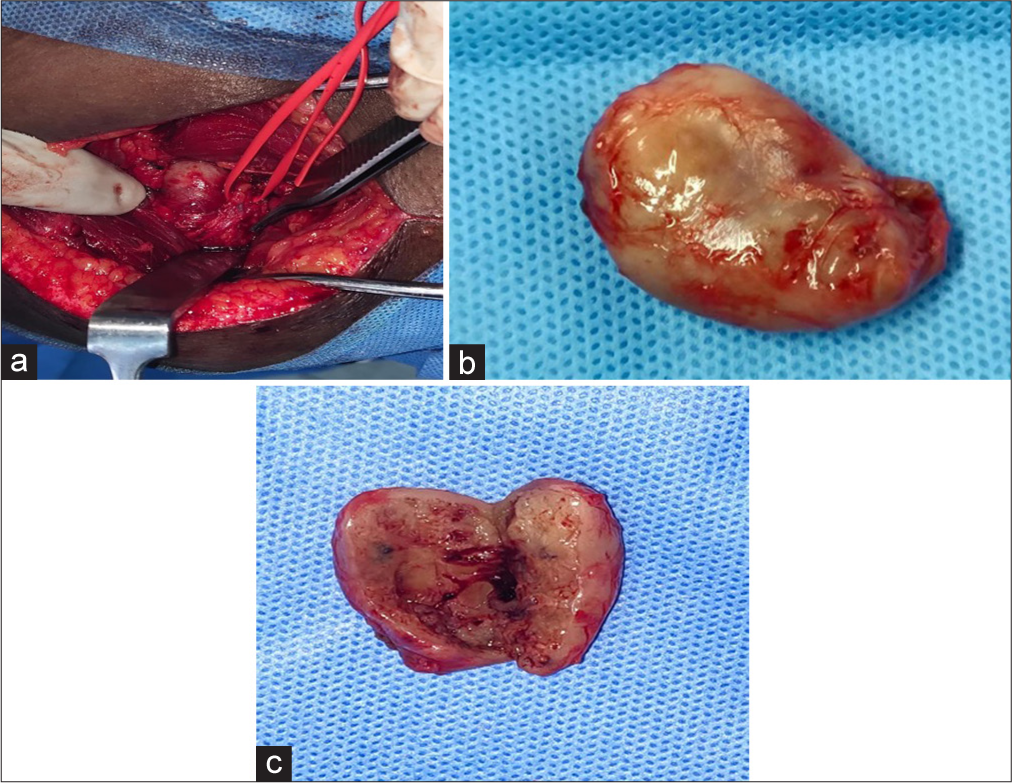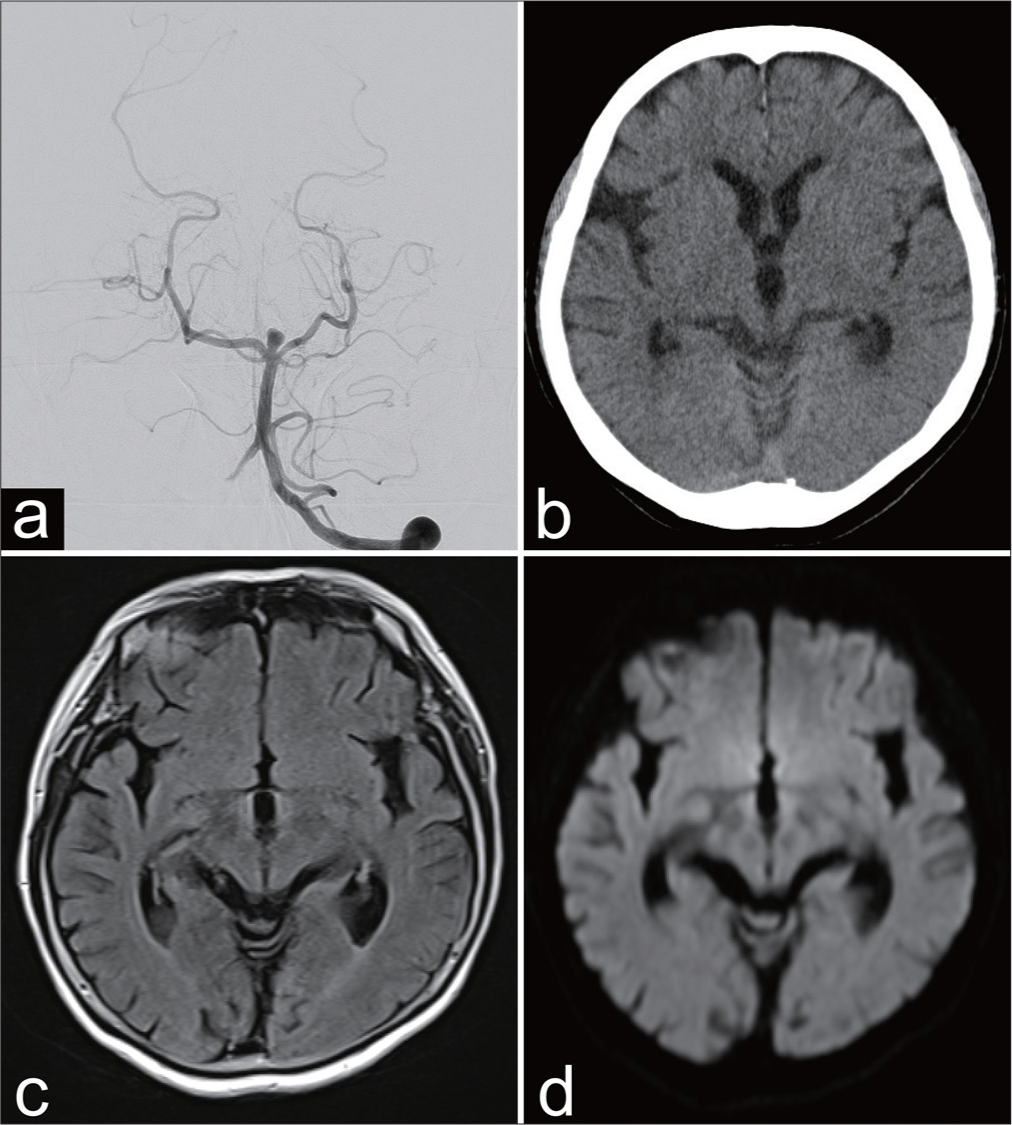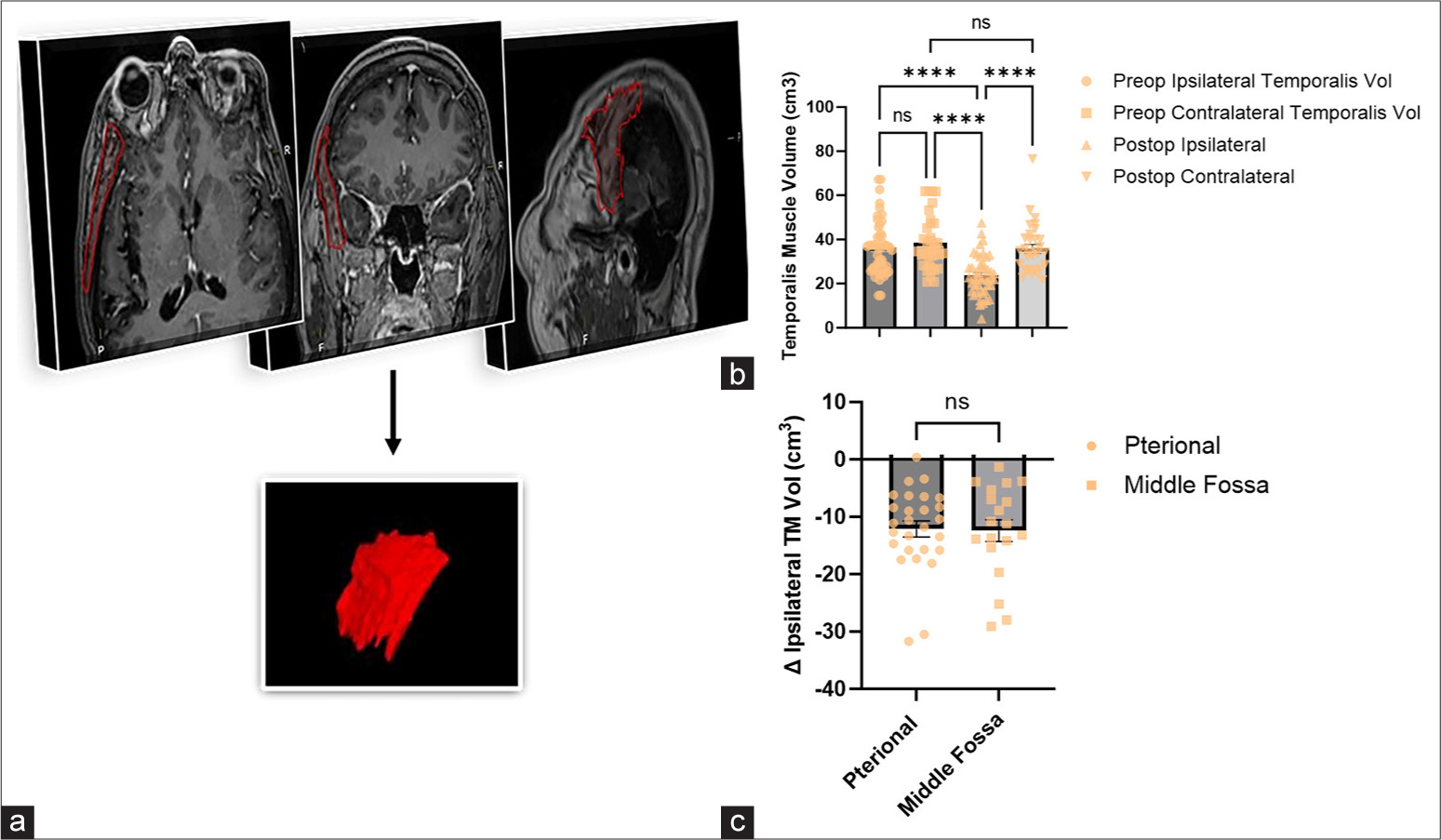A case of recurrent hemangioblastoma receiving blood supply from the mastoid and transosseous branches of the occipital artery
Date of publication: 02-May-2025
BackgroundHemangioblastomas (HBs) typically receive their blood supply from the branches of the intracranial arteries; however, meningeal branches or arteries originating from the external carotid artery are rare because of the intramedullary subpial location of the HBs. Although HB embolization is effective, it carries complication risks.
Encephalitis-causing free-living amoebic infections in children: A rare and fatal disease
Date of publication: 02-May-2025
BackgroundBrain infection by free-living amoebae can present as granulomatous amoebic encephalitis if caused by Acanthamoeba spp. or Balamuthia mandrillaris, or as primary amoebic meningoencephalitis if caused by Naegleria fowleri, the latter with high morbidity and mortality. Diagnosis is made by studying cerebrospinal fluid or tissue samples by direct microscopy, culture, polymerase chain reaction, or immunofluorescence. There is no specific treatment, and there are only reports of success with prolonged use of combined drugs.
Iatrogenic cerebral amyloid angiopathy: Two cases linked to childhood cadaveric dural transplantation for different intracranial pathologies, diagnosed using the simplified Edinburgh computed tomography criteria
Date of publication: 02-May-2025
BackgroundCerebral amyloid angiopathy (CAA) is an age-related condition marked by amyloid-β (Aβ) accumulation in the small cerebral vessels. Iatrogenic cerebral amyloid angiopathy (iCAA) is a distinct form of CAA in younger patients with a history of cranial surgeries involving cadaveric dural transplants. Both iCAA and CAA are linked to recurrent lobar intracerebral hemorrhage (ICH). This article highlights iCAA as a distinct variant, discussing the possibility of using simplified Edinburgh computed tomography (CT) criteria as a possible diagnostic tool for CAA and carefully considering plausible childhood surgery, with the risk of Aβ transmission through dural grafts in all, especially middle-aged patients.
Quadrangular space schwannoma affecting the axillary nerve
Date of publication: 02-May-2025
BackgroundSchwannomas are benign neural tumors originating primarily from Schwann cells associated with cranial and spinal nerves, which are a well-known medical entity. However, their occurrence in the extremities, particularly those involving the axillary nerve, is a rare phenomenon with limited literature documentation.
Paroxysmal sympathetic hyperactivity: Current update on diagnosis, treatments, and outcomes
Date of publication: 02-May-2025
BackgroundParoxysmal sympathetic hyperactivity (PSH) is a severe dysregulation of the sympathetic nervous system, often resulting from traumatic brain injury (TBI). With a prevalence of 10–30% in TBI patients, PSH poses diagnostic and therapeutic challenges. This study reviews advancements in diagnosis, management, and outcomes associated with PSH.
Cerebrospinal fluid diversion procedure utilization and physician reimbursement in adult hydrocephalus patients
Date of publication: 02-May-2025
BackgroundAs the population continues to age, the number of adults receiving care for hydrocephalus is expected to increase. Here, we assess trends in the utilization and physician reimbursement for ventriculoperitoneal shunts (VPS), lumboperitoneal shunting (LPS), and endoscopic third ventriculostomy (ETV) for adult hydrocephalus.
A rare case of giant infrasellar craniopharyngioma with extensive invasion of the pterygopalatine fossa: A case report and literature review
Date of publication: 02-May-2025
BackgroundCraniopharyngiomas are benign epithelial tumors that arise along the craniopharyngeal duct, commonly located in the sellar or suprasellar region. Infrasellar extension is a rare variant and may involve the nasopharynx, sphenoid sinus, clivus, and pterygopalatine fossa.
Contrast-induced posterior reversible encephalopathy syndrome following diagnostic angiography of vertebral artery
Date of publication: 02-May-2025
BackgroundPosterior reversible encephalopathy syndrome (PRES) is characterized by transient vasogenic edema, predominantly affecting the white matter in the posterior cerebral hemispheres. It presents with acute neurological symptoms such as headaches, visual disturbances, and seizures. The pathophysiology of PRES, including its overlap with contrast-induced encephalopathy and transient cortical blindness, remains unclear.
Predictors of temporalis muscle atrophy and head asymmetry following frontotemporal craniotomy: A retrospective analysis of clinical factors and volumetric comparison
Date of publication: 02-May-2025
BackgroundTemporalis muscle (TM) atrophy is a commonly encountered cosmesis issue following craniotomies. This retrospective study aims to investigate the correlation of clinical and surgical factors with postoperative TM volume and head symmetry in patients undergoing frontotemporal craniotomy.
Microsurgical insights: A comprehensive anatomical study of Heubner’s recurrent artery
Date of publication: 02-May-2025
BackgroundThe recurrent artery of Heubner (RAH) was first described by Johann Heubner in 1872 and later named by H.F. Aitken in 1909. It is the largest medial lenticulostriate artery from the anterior cerebral artery (ACA). Originating from the A1, A2, or ACA-anterior communicating artery junction, it supplies key brain structures like the caudate nucleus and anterior hypothalamus, with variations in origin and course among individuals.
















